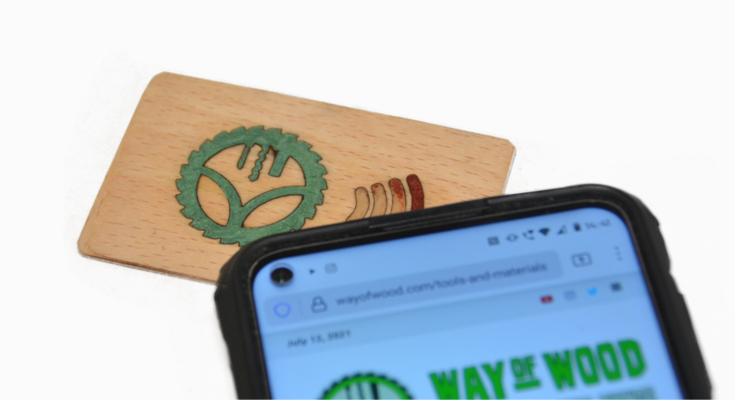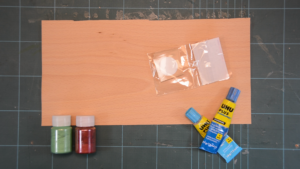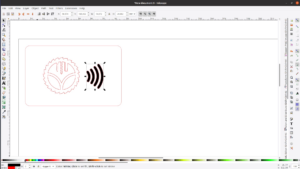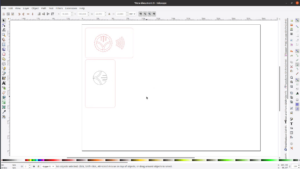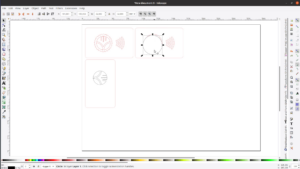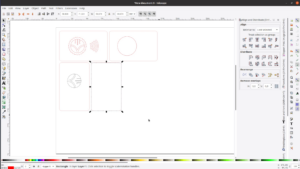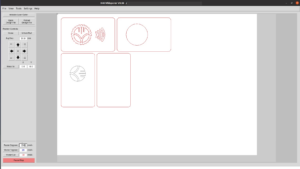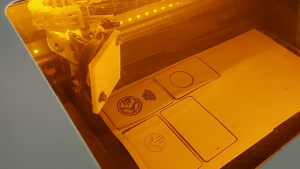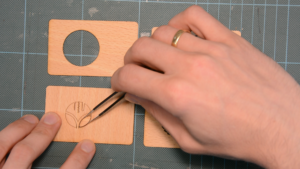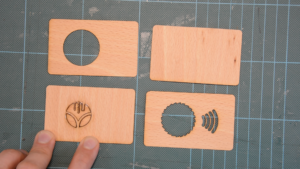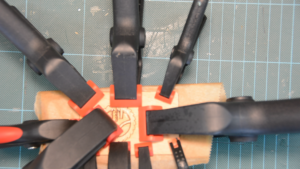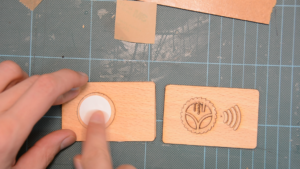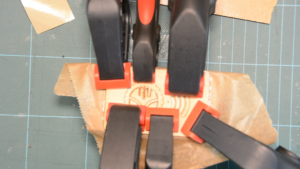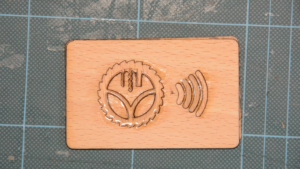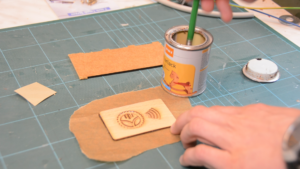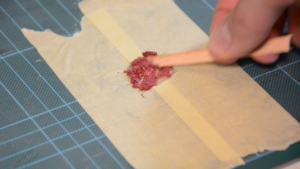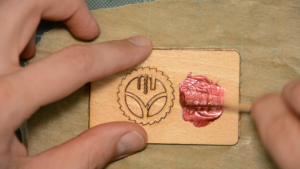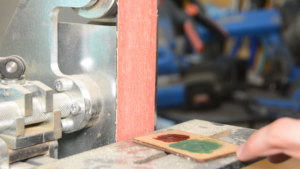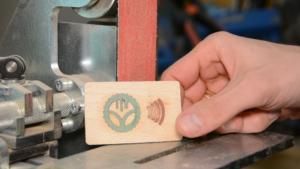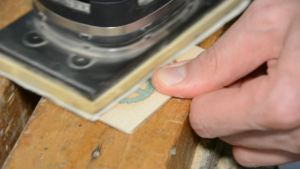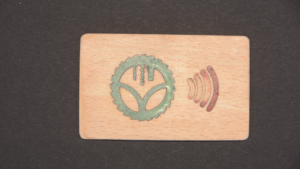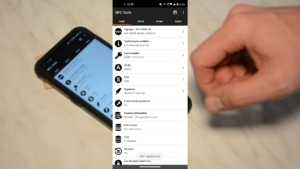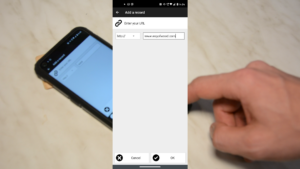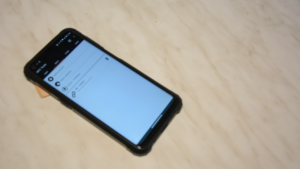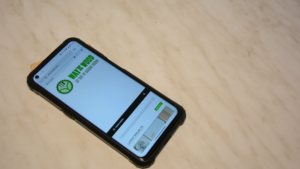In this article we create a wooden NFC business card with an epoxy inlay. The card contains a NFC chip with contact details or a website information. If you put it close to a phone it will show the contact details or open a website.
The parts that we need for this NFC business card are quite cheap. We need half a sheet of veneer. A pack of 15 sheets costs around 10 bucks. The NFC tags themselves are 7 Euro for a pack of ten. In addition we need very little pigment powder and a drop of epoxy. If you batch out a bunch of these cards each one would cost less than 1 Euro.
Designing the NFC business card
The design in Inkscape is very simple and straight forward. I drop my logo and the NFC icon into Inkscape and size these to fit on a business card. After cutting the logo on the laser cutter it will contain some loose parts in the middle. In order to align these properly I will engrave a thin outline into the second layer. One of the layers contains a cutout for the NFC chip.
With all the design work done I open the svg in K40Whisperer and first engrave the black outline. Then I also send the red cutting path to the laser. Note that the grain of each layer is rotated by 90 degree to the next one. This stiffens up the card. Basically we create our own plywood.
The laser cutter is a K40 Chinese laser cutter. If you look for more information on it have a look at this review.
Assembly and epoxy inlay
We end up with a set of puzzle pieces. When gluing the internal parts of my logo on the second sheet the engraved outline is a big help to positions these correctly.
I then glue the top two and the bottom two layers together with wood glue and let the glue dry.
After gluing the top and bottom together the delicate parts are stabilized with thin superglue.
Before applying the epoxy for the epoxy inlay I always add a thin layer of water based poly so that the colored epoxy does not sip into the wood pores and leaves a nasty color stain.
After the finish is fully cured I mix some 5 min epoxy with pigment powder and smear it into the recesses.
Sanding and finish
I let the epoxy cure for half a day and and then sand off the excess. The surface is sanded to 220 grid.
After sanding and a bit of spray lacquer let’s look at the finished product. It actually has two major flaws: On the left hand side I sanded through the top layer of veneer and it seems that I didn’t mixed the red epoxy good enough so that a part of the NFC icon is only filled with clear epoxy.
Programming the NFC business card
But these are only cosmetic issues and do not affect the functionality of the NFC business card. Using the free app NFC Tools on my mobile phone I can read the data from the NFC chip that is burried between the veneer layers. At the moment there is no data stored on the chip – which has a remaining capacity of around 500 Byte.
With the same app we can store any kind of data – as for example a business card or a URL. You could also add the access code for you wireless network or any kind of data.
I would like to store the URL of my website on the chip. After removing the chip from the phone I press write and then touch the phone with the card. The information is now written on the chip.
In order to use the business card we need no special app. Just touch the phone with the business card and the website is opened.

